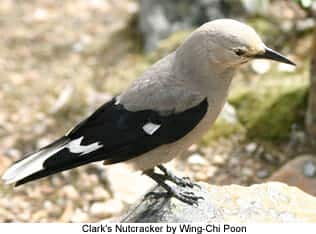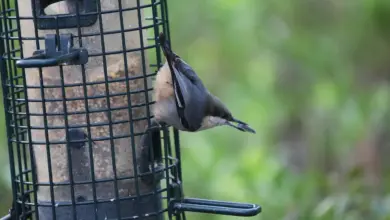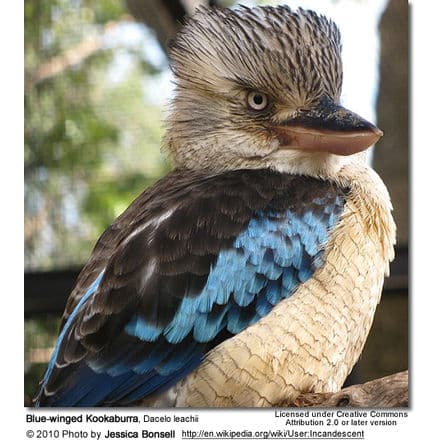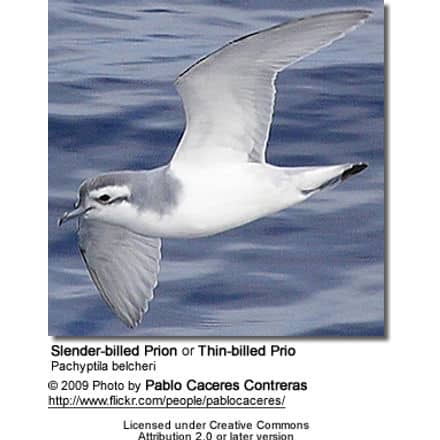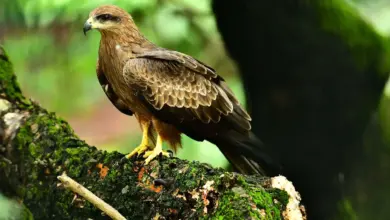Clark’s Nutcrackers
Clark’s Nutcrackers
The Clark’s Nutcrackers (Nucifraga columbiana), occurs in western North America from British Columbia and western Alberta in the north to Baja California and western New Mexico in the south.
A small isolated population also exist on the peak of Cerro Potosí (3,700 m) in Nuevo León, northeast Mexico.
They are mainly found in mountains at altitudes of 900-3900 m in pine forest.
When not breeding and in search of food, they may migrate to lower altitudes and also further east as far as Illinois (and exceptionally, Pennsylvania).

Description
It is slightly smaller than its Eurasian relative Spotted Nutcracker (N. caryocatactes).
The plumage is ashy-grey all over except for the black-and-white wings and central tail feathers (the outer ones are white).
The bill, legs and feet are also black.
Diet / Food
The most important food resources for this species are the seeds of Pines (Pinus sp.). They store surplus pine seed in the ground for later consumption.
They regularly store more than their actual needs (up to 100,000 seeds per bird) as an insurance against seed theft by other animals (squirrels, etc.). The surplus seed germinates and grows into new trees.,
Its long-term spatial memory is remarkable – they are able to relocate caches of seeds even six months later, even in cases where they are buried under up to a meter or 3 feet of snow.
They also feed on a wide range of insect prey, berries and other fruits, small mammals and occasionally flesh from carcasses. Other bird eggs and nestlings also taken.
Food is taken both on the ground and in trees (where it is very agile among the branches) where cones are held between one or both feet and hacked open with the strong bill.
Peanuts* and suet have become a favorite at bird tables
*Note: Peanuts are a valuable source of protein — however, peanuts are often contaminated with aflatoxin, a fungal toxin. Aflatoxin is carcinogenic and causes liver damage in birds and other animals. Roasting reduces aflatoxin but does not eliminate it entirely. North American peanut producers are currently working on eliminating contaminated peanuts from their products. Caution is advised when feeding peanuts. Some bird owners, opting to be on the safe side, are eliminating peanuts from their pets’ diet.
Breeding / Nesting
They usually nest in pines or other conifers – always very early in the season. Wind protection seems to be of more value for nest placement.
The average clutch size consists of 3 eggs laid. The incubation period is usually 16-18 days. The young fledge when they are about 22 days old.
The young follow their parents around for several months after fledging to learn from them their complex seed storage behaviour.
Call / Song
The voice is extremely varied and many sounds are made but the most frequent is usually described as khaaa-khaaa-khaaa or khraa-khraa-khraa, usually in a series of three.
